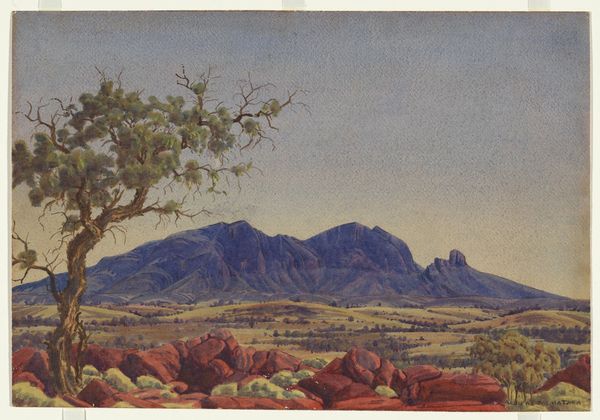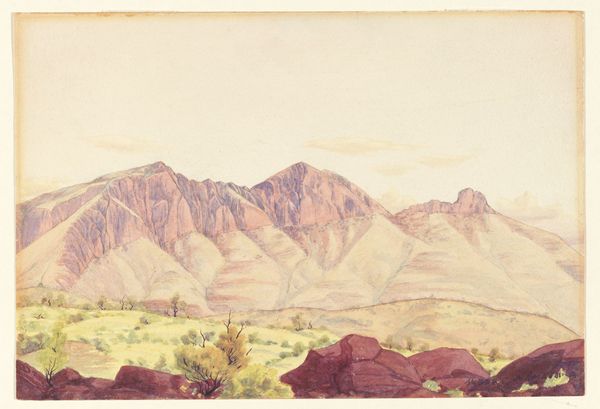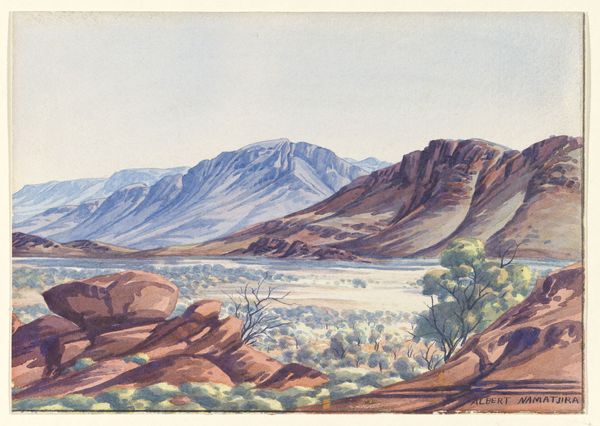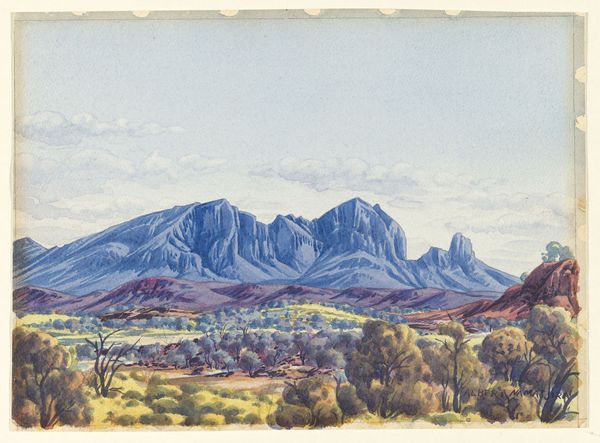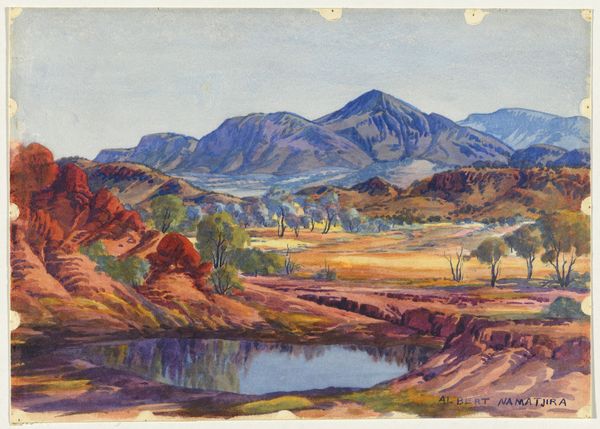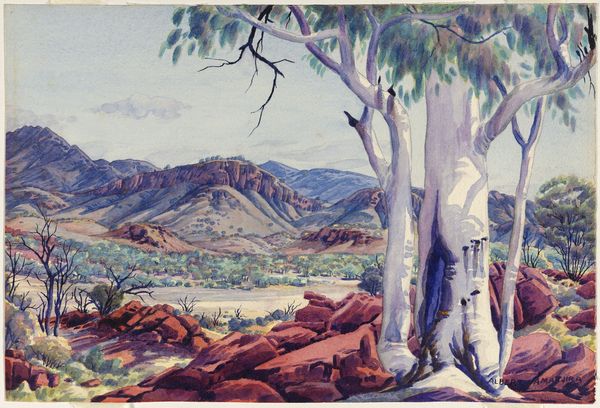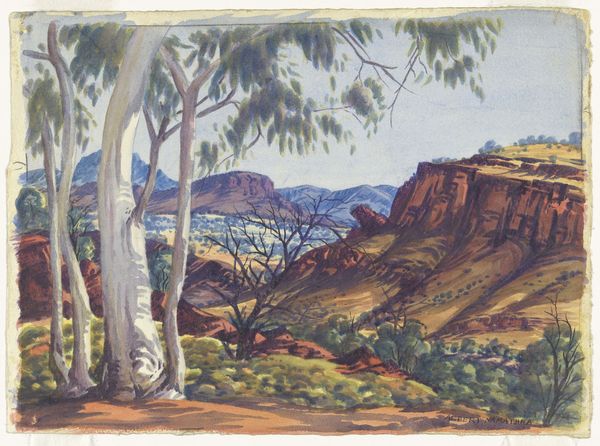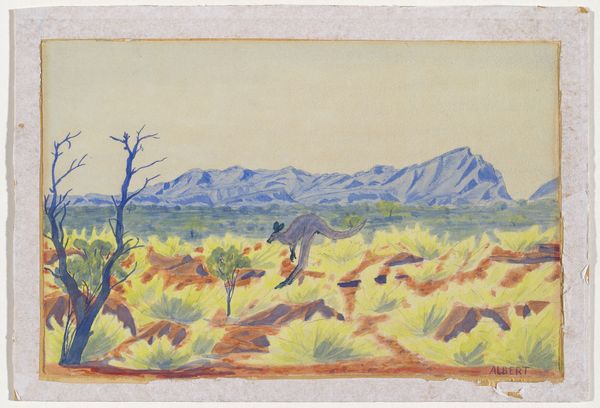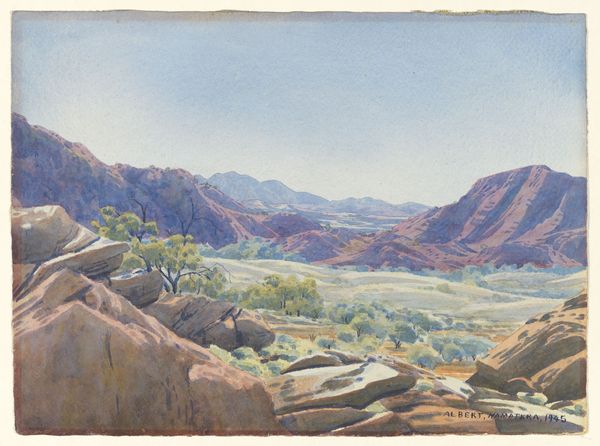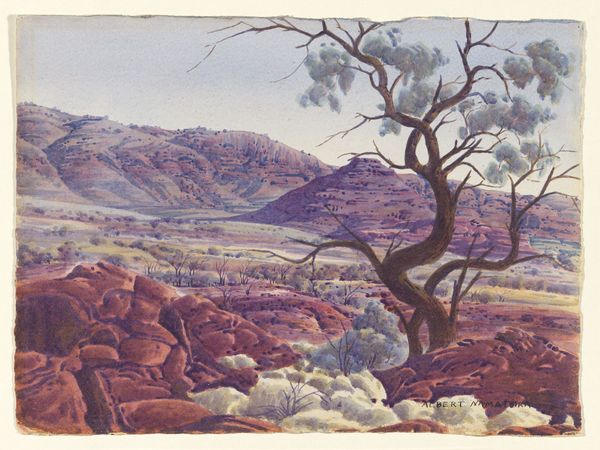
watercolor
#
landscape
#
nature
#
oil painting
#
watercolor
#
watercolor
Copyright: Albert Namatjira,Fair Use
Editor: We're looking at "Mount Sonder, MacDonnell Ranges," a 1957 watercolor by Albert Namatjira. The mountain dominates the scene. There’s a stark beauty in the landscape but something feels almost…lonely. How do you interpret this work? Curator: That feeling of solitude resonates. Consider the context: Namatjira, an Indigenous artist painting in a Western style. This work speaks to a complex negotiation of identity. The landscape, his ancestral land, is rendered through a European lens. Editor: So the act of painting *in* that style is significant? Curator: Absolutely. It’s about visibility and agency. He gained recognition through this medium, but did it come at the cost of cultural erasure? Think about the inherent power dynamics. Who gets to define "art," and whose stories are being told? Look at the stark contrast of colors in the painting. What message do you think Albert wants us to know? Editor: I hadn't considered that tension. It's a beautiful painting but now, knowing the cultural background, the beauty is…complicated. Almost a form of resistance? Curator: Perhaps a reclamation. He is depicting his Country. Namatjira is asserting his connection, his belonging. The details matter; the watercolor, a medium associated with Western art, becomes a vehicle for Indigenous self-representation. Do you find the context impacts the way you relate to the art? Editor: Definitely. I see it now as a statement about identity and belonging, a negotiation between cultures. It’s far more powerful than just a pretty landscape. Curator: Precisely! Understanding the layers of history and cultural identity allows us to engage with the artwork in a much more meaningful way.
Comments
No comments
Be the first to comment and join the conversation on the ultimate creative platform.
